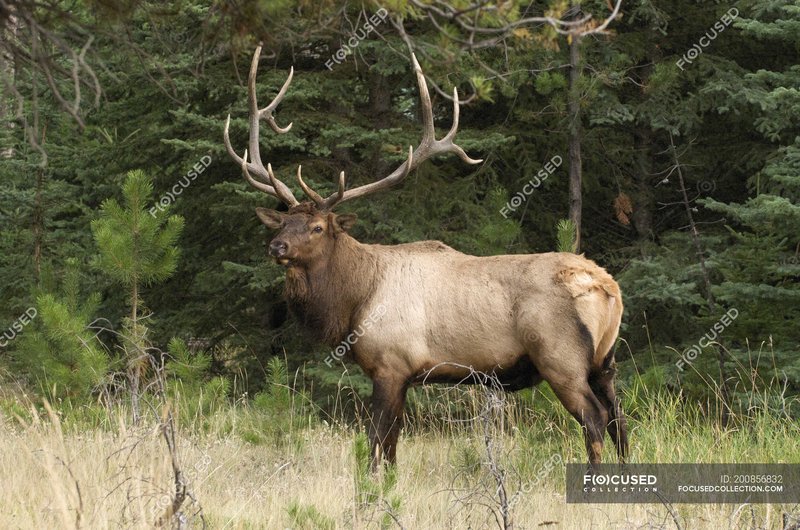
Wapiti, with their towering stature and impressive presence, often roam in national parks and forests. They evoke a sense of wonder and admiration, much like spotting a rainbow after a rainstorm. However, their sheer size and unpredictability prompt the question of whether they pose a risk to human safety. It’s essential to understand both their nature and the circumstances under which they might become dangerous. Let’s dive into the world of wapiti and see how we can coexist with them safely.
Understanding Wapiti Behavior
Wapiti are part of the deer family and can weigh between 500 to 1,100 pounds. Yes, you read that right! They’re pretty hefty animals, and their size alone commands respect. But it’s not just their weight that matters; it’s their behavior that dictates how they may react around humans. Wapiti are generally peaceful creatures, grazing on grasses, leaves, and other vegetation. They prefer to keep to themselves and will usually avoid confrontations.
However, you might be wondering what happens if they feel threatened. Wapiti can exhibit defensive behaviors, especially when they perceive danger to themselves or their young. During the mating season, which occurs in the fall, things can get a bit intense. Male wapiti display aggressive behavior to establish dominance over other males and attract females. This is when they’re most likely to be a danger to humans, particularly if someone accidentally gets too close during this crucial period.
When Do Wapiti Become Aggressive?
Honestly, aggression in wapiti usually stems from fear or territorial instincts. If a wapiti feels cornered or cornered, it might react defensively. Their most aggressive behavior can occur during:
- Calving Season: Female wapiti are highly protective of their young calves. If you come across a calf alone, the mother is likely nearby, and she will fiercely defend her baby.
- Mating Season: In the fall, male wapiti can become more aggressive as they vie for mates. They may challenge each other with loud calls and displays of power—this is when they might not appreciate getting too close to human onlookers.
- Surprise Encounters: A wapiti startled by human presence, especially in close quarters, may react unpredictably. Even the calmest wapiti can become startled and defensive if suddenly approached.
Understanding these scenarios can help people appreciate and respect these animals while avoiding situations that could lead to conflict.
How to Safely Observe Wapiti
If you’re lucky enough to see wapiti in the wild, it’s important to practice safety. Here are some essential tips for observing these animals without putting yourself or them at risk:
1. **Keep Your Distance:** Always maintain a safe distance. A good rule of thumb is to stay at least 100 yards away from wapiti. This ensures that they feel comfortable and aren’t threatened by your presence.
2. **Stay Quiet:** Loud noises can startle wapiti and provoke a defensive reaction. When observing them, speak softly or simply enjoy the silence of nature.
3. **Avoid Feeding:** Never attempt to feed wapiti. Not only is it bad for their health, but it can also lead them to associate humans with food, which can escalate dangerous encounters.
4. **Respect Signs and Guidelines:** Many parks post signs with guidelines on how to safely view wildlife. These aren’t just suggestions—they’re vital for both your safety and the animals’ well-being.
By following these simple steps, you can enjoy the beauty of wapiti in their natural habitat without risking harm.
Wapiti and Human Encounters: What the Data Says
Statistics show that serious encounters between wapiti and humans are relatively rare, but they do happen. According to wildlife studies, most of the dangerous interactions occur when humans inadvertently approach a wapiti too closely.
It’s crucial to remember that wild animals are unpredictable. Even if an encounter has gone smoothly before, it doesn’t guarantee that the next one will, too. Park rangers often emphasize that humans should always maintain respect for wildlife.
For instance, a group of tourists near a national park once got too close to a roaming wapiti, thinking it would be a great photo opportunity. The wapiti, feeling threatened, charged at them, resulting in injuries.
This story illustrates how important it is to prioritize safety and awareness in shared spaces. Always keep a respectful distance, and you’ll minimize the risks.
Comparing Wapiti with Other Wildlife
You might be curious about how wapiti stack up against other wildlife when it comes to potential danger. Here’s a quick comparison with a few other popular North American animals:
| Animal | Potential Danger Level | Typical Behavior |
|---|---|---|
| Wapiti | Medium | Generally peaceful; can become aggressive when threatened |
| Black Bear | High | Usually avoids humans; can be dangerous if surprised or protecting cubs |
| Moose | Medium | Can be aggressive if threatened, especially in mating season |
| Deer | Low | Usually timid and avoid people |
While wapiti may seem intimidating due to their size, understanding their behavior helps you realize that they’re not inherently dangerous—most of the time, they just want to be left alone.
The Role of Conservation in Wapiti Safety
Conservation efforts play a significant role in promoting harmony between wapiti and humans. Many national parks have developed programs to educate visitors on best practices for wildlife viewing. These programs also aim to protect wapiti habitats from human encroachment, helping maintain healthy populations.
Moreover, regulated hunting seasons are implemented in some regions to manage wapiti populations effectively. Controlled hunting helps prevent overpopulation, which can lead to more frequent human-wapiti interactions.
It’s essential to support conservation organizations that promote protective measures and educate the public. By doing this, we can ensure that both wapiti and humans coexist peacefully in shared spaces.
Final Thoughts
So, can the wapiti be dangerous to humans? The answer is nuanced. While they can exhibit aggressive behavior under certain conditions, most of the time, they are gentle giants, content to graze and roam. By respecting their space and following safety guidelines, we can coexist harmoniously with these magnificent animals.
It’s all about understanding their nature and recognizing the circumstances that can lead to danger. As we continue to appreciate the beauty of wildlife, let’s remember to tread lightly and respect the boundaries that allow both humans and wapiti to thrive in our beautiful world.

